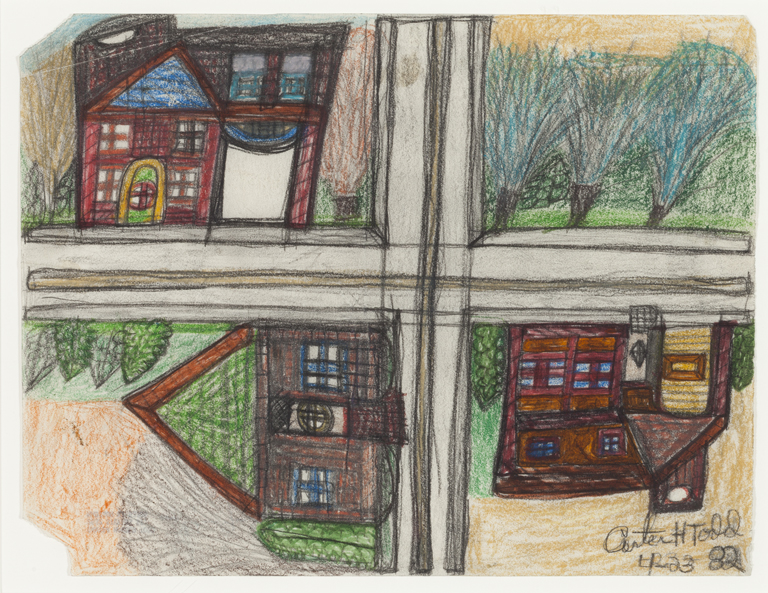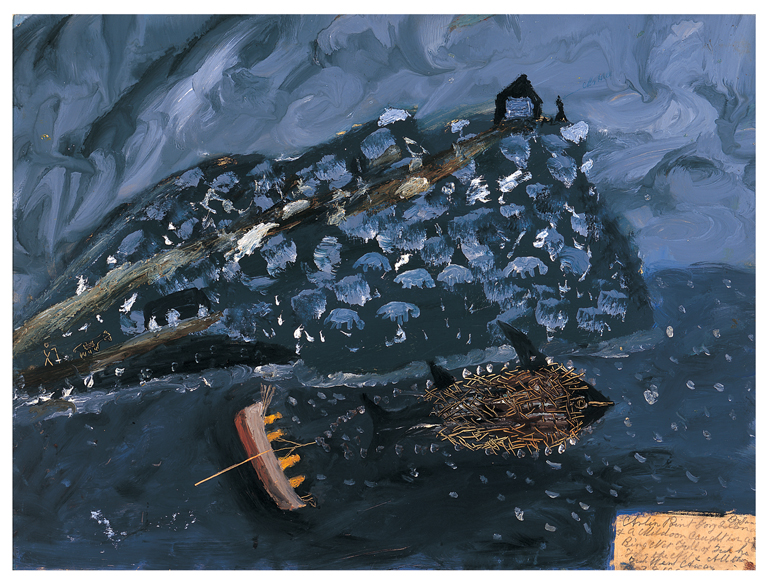
Untitled, 1982
Crayon and pencil on paper
8 3/8 × 10 3/8 in. (21.27 × 26.35 cm)
Gift of Anthony Petullo M2012.218
Photo credit: John R. Glemb

Arlin Point, 1966
Oil, pencil, and ink on board
22 × 29 1/2 in. (55.88 × 74.93 cm)
Gift of Anthony Petullo M2012.34
Photo credit: Larry Sanders
This activity was loosely based on one shared in the Milwaukee Writing Project Writing Retreats.
Objective: In this two-part activity, students will experiment with perspective to explore the meaning of home.
Materials:
- Paper
- Drawing materials
Introduce: Artists such as Carter Todd and James Dixon created artwork inspired by where they lived, but they combined different views of the place in one image—a bird’s-eye view of a street, for example, appears alongside a head-on view of a house. In art, this is called multiple perspectives.
Ask:
- What is a “home”? (a house, a neighborhood, the school, a library, a chuch, or another place in their community?)
- Where do you feel most “at home”?
- Why might one perspective be more meaningful than another? (For example, I might choose to show my street from a bird’s-eye view, like a map, because it is universal to so many people, but my bedroom is just mine, so I sketch that head-on.)
Activity 1:
- Have students write down the place that feels most “at home” to them as well as the words and memories they associate with it.
- Students should then illustrate that place using different perspectives in the same sketch.
Activity 2:
- Have students write a nonfiction prose work about the meaning of their home. Talk with them about perspectives in writing—that is, points of view.
- Students should use at least two different perspectives in their writing. The piece might be based on a specific memory, a feeling, or even a smell or taste that they associate with that place.
- They should use their brainstorming list of words and memories as well as their sketch to help inspire their writing.
National Standards:
- VA:Cr1.2.6a Formulate an artistic investigation of personally relevant content for creating art.
- VA:Cr2.1.5a Experiment and develop skills in multiple art-making techniques and approaches through practice.
Share your artwork with us on social media @milwaukeeart #MAMLearn or email pictures to teachers.mam.org. We’d love to see your creations!
